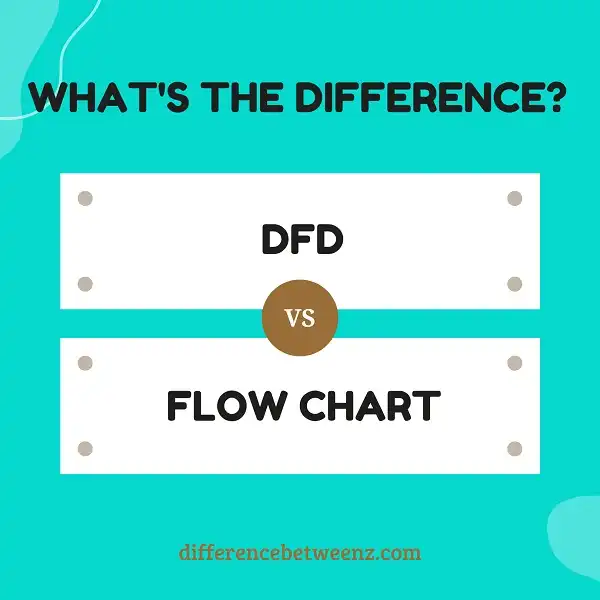Both DFDs and flow charts are two different ways of representing a system’s or process’ functionality. They both have their own strengths and weaknesses, which is why it’s important to understand the difference between them before deciding which one to use. In this blog post, we’ll take a closer look at these two diagramming methods and outline the key differences between them.
What is DFD?
DFD is an acronym for Data Flow Diagram. DFDs are a way of representing the flow of data through a system. They are often used to visualize how data is processed by a system, and to identify bottlenecks or areas where data might be lost. DFDs can be used to represent both manual and automated processes. In a DFD, data is represented as arrows, and processes are represented as boxes. The arrow indicates the direction of data flow, and the box represents a process or transformation that is carried out on the data. DFDs can be drawn at different levels of detail, from high-level diagrams that show the overall structure of a system, to low-level diagrams that show the details of a specific process. DFDs are a valuable tool for designers and developers, as they can help to clarify the requirements for a system and identify potential problems early in the design process.
What is Flow Chart?
- A Flow Chart is a graphical representation of a process or system that shows the steps as boxes of various kinds, and their order by connecting them with arrows. Flow Charts are used in engineering, manufacturing, technical writing, business process modeling, process flow diagrams, quality management/continuous improvement. Flow Charts were originally created using pencil and paper before being computerized.
- Today, Flow Charts are created using software tools such as Microsoft Visio. Flow Charts can be very simple, containing only a few steps, or complex, containing hundreds of steps. Flow Charts can be used to show parallel processes, branches and Loop structures. Flow Charts can be used to document a process or system, or to model a new one. When creating a Flow Chart it is important to consider what information needs to be shown, and how it should be arranged. The layout of the Flow Chart will depend on its purpose and audience.
- For example, a Flow Chart intended for senior management will be different from one intended for operational staff. It is also important to consider the level of detail required. A high-level Flow Chart may only show the major steps in a process, while a low-level Flow Chart will show all the steps in detail. Once the purpose and audience have been decided, the next step is to choose the symbols to be used in the Flow Chart. The most common symbols are rectangular boxes (steps), diamonds (decisions), circles (connectors) and arrows (process flow). There are many other symbols that can be used, but these are the most commonly used ones.
- Once the symbols have been chosen, they need to be placed on the page and connected together using arrows to show the order of the steps. The last step is to add labels to the Flow Chart so that it is clear what each step represents. Flow Charts can be very useful tools for documenting and modeling processes and systems. When used correctly, they can help to improve communication and understanding between different departments or teams within an organization.
Difference between DFD and Flow Chart
DFD and Flow Chart are two types of diagrams that are used for visualizing the flow of data. DFD is an abbreviation for Data Flow Diagram, while Flow Chart is an abbreviation for flowchart. DFD is a graphical representation of the flow of data through a system. It shows how data is transformed from one form to another. Flow Chart is a diagrammatic representation of an algorithm or a process. It shows the steps involved in the execution of a task. DFD is used to represent the flow of data in a system, while Flow Chart is used to represent the flow of control in a system. DFD can be used to represent both manual and automated processes, while Flow Chart can only be used to represent automated processes. DFD is more suitable for representing complex processes, while Flow Chart is more suitable for representing simple processes.
Conclusion
Although DFD and flow chart have different purposes, they are both important tools for understanding a system. The next time you are working on a project, it might be helpful to use both diagrams to get a complete picture of the system.


